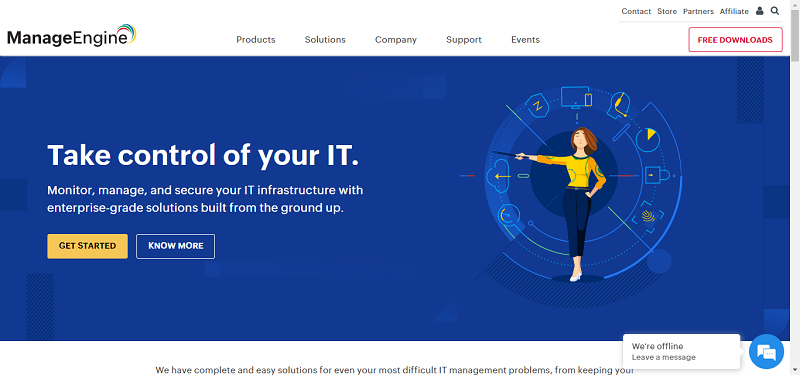Cloud projects are highly complex. Without a strong project management office, they have a tendency to go off track. As enterprises in all verticals look to modernize application and infrastructure stacks, Project Management Offices (PMO) will de-risk the process and help organizations get to where they want to be on-time and on-budget.

(Image Source: Pinterest)
While the project managers in some enterprises are responsible for planning and meetings, there is often far greater success when project managers are responsible for meeting a project’s core objectives and empowered to make important decisions. Instead of living on the sidelines of a project as facilitators, they are the central brain for ensuring the strategy is executed. They know what is happening on each level of the project, from the status of an engineer’s tickets to understanding the CEO’s vision for the next three years.
Successful project managers for cloud projects should be experienced technologists with PM skills. This gives them a place of authority and allows them to drive the discussion around planning with engineers and business leaders alike.
PMs are normally the first to spot when strategy and execution diverge. After the initial planning phase of a project, CTOs are typically not involved in execution day-to-day. PMs fill the gap and report directly to CTOs and line of business directors. When engineers go off-plan, the PM has the authority to say “no” — and their knowledge of the full plan allows them to back up their case.
Similarly, when business leaders make the case for the engineers to work on a new project, PMs can articulate exactly what the impact of such a decision would be. Because they know the backlog, they can assess what other high-priority items would get pushed back, how this would affect delivery timelines and budgets, and make a business case for either maintaining the current plan or changing it.
Depending on complexity or scale, cloud plans can take time to execute fully. During this time, strategy can changes. Engineering staff can change. New lines of business can launch.
All too often, there are business leaders operating at 30,000 feet and engineering teams at ground level, and “weak” project managers running in between them. Engineers see a bulleted list of strategies that have little impact on their tickets, and business leaders see a list of in-progress features with unclear ties back to their vision.
Because PMs take part in daily meetings or other interactions, they can answer detailed questions, like, “How many VPCs do we have?” or “How long will it take to install Alert Logic?” PMs then absorb high-level priority discussions and help technical leaders set priorities.
When a strong PMO is not in place on a cloud project, engineers are often the ones who suffer most. Frequently, it means an overload of tickets for unrelated projects in multiple lines of business, which lowers efficiency and increases dissatisfaction.
Strong PMs set the right priorities and give the business context for engineers. They may even choose to focus certain engineers on certain lines of business to increase their efficiency as well as give engineers the opportunity to build depth while giving them sanity. PMs may also help spot gaps in engineering talent, advise their CTO accordingly and help hire the right engineer(s).
Engineers should not have to worry about how much an Instance costs; they should be busy implementing the best technology solution. CTOs should worry about cost, but they cannot and should not get involved in every decision about instance size, backup frequency, dedicated storage, etc. PMs fill the gap.
PMs should understand their cloud platform’s cost structure backwards and forwards. They should be able to balance cost with risk, and know when to escalate a decision or let an engineer choose. They can even be accountable to the CFO’s office to report daily, weekly, or monthly costs.
No matter how much planning happens, the journey to the cloud can be unpredictable. Unforeseen issues and roadblocks can present themselves in any complex undertaking – especially when organizations are new to a paradigm-shifting technology like the public cloud.
PMs identify risks through a big picture lens of strategy, planning and execution. This enables them to proactively identify risks before they happen and put plans in place to address them. PMs also ensure issues get the right level of escalation and visibility, and help come up with the right solution.
Project managers not only act as a single point of contact for both the engineers and the management team, but they also act as a single point of accountability. They are experts at communicating bad news because they can account for why it happened, articulate the exact effects of the failure, and present a plan for preventing future mistakes.
This works both ways. PMs may take flak when business-level strategy changes, and they may be at the front lines of manager frustration when downtime happens. In both cases, they remain focused on the overall success of the project rather than the blame game, and are close enough to the ground to take measurable steps to ensure failure does not happen again.
If you are about to kick off a new cloud project or are struggling to keep your current cloud on track, create a PMO team or outsource cloud orchestration. This team will be worth their weight in gold as your infrastructure scales and grows more complex.
By Vinny Hu





